Electronics News
Archive : 24 September 2016 год
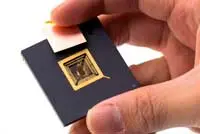 UltraSoC has expanded its SoC debug solution to include products based on the RISC-V instruction architecture (ISA), which is gaining in popularity as developers look to create open source processors.
UltraSoC has expanded its SoC debug solution to include products based on the RISC-V instruction architecture (ISA), which is gaining in popularity as developers look to create open source processors.
“We’re delighted to be able to support RISC-V and we’re committed to doing whatever we can to make it a success,” said Rupert Baines, UltraSoC’s CEO. “Our stance is vendor neutral and ecosystem based. We aim to create a universal development and debug infrastructure in which designers can freely choose the best architecture for the job. I believe our approach is an excellent fit with the aims and aspirations of the RISC-V movement.”
Rick O’Connor, executive director of the RISC-V Foundation, added: “We are building a complete ecosystem: end users, processor architects, tools vendors and supporting components. UltraSoC’s debug and development tools will be a great addition to the community.”
Author
Graham Pitcher
Source: www.newelectronics.co.uk
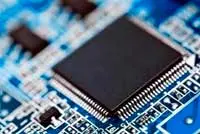 The Architects of Modern Power consortium has announced an additional standard aimed at establishing common mechanical and electrical specifications for the development of advanced power conversion technology for distributed power systems.
The Architects of Modern Power consortium has announced an additional standard aimed at establishing common mechanical and electrical specifications for the development of advanced power conversion technology for distributed power systems.
Called gigaAMP, the standard addresses 60A devices supplied in an LGA footprint measuring 25.1 x 14.1mm. The consortium says this builds on the picoAMP standard, which defined standards for non isolated platforms with ratings ranging from 6A to 18A.
“The gigaAMP standard is a continuation of the AMP Group’s efforts to establish industry standards that cover every aspect of board level digital power technology,” said Martin Hägerdal, president of Ericsson Power Modules.
“The addition of this standard at 60A helps to further address the growing demands on performance, complexity and flexibility in intelligent power supply infrastructures,” added Steve Pimpis, president and CEO of Murata Power Solutions.
Author
Graham Pitcher
Source: www.newelectronics.co.uk
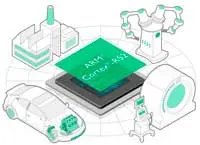 ARM has launched a real-time processor with advanced safety features and is targeting the device at autonomous vehicles and medical and industrial robots.
ARM has launched a real-time processor with advanced safety features and is targeting the device at autonomous vehicles and medical and industrial robots.
The Cortex-R52 has been designed to address functional safety in systems that must comply with the stringent requirements of ISO 26262 ASIL D and IEC 61508 SIL 3. As such, the core is suited to systems that demand advanced safety features, alongside efficient and responsive execution.
According to James McNiven, general manager of ARM’s CPU and media processing groups: “The Cortex-R52 is the first processor built on the ARMv8-R architecture and was designed from the ground up to address functional safety. We are helping partners to meet particular market opportunities, especially in fully autonomous vehicles and robotics systems where specific functionality is required for safety-critical tasks.”
The Cortex-R52 offers hardware enforced separation of software tasks to ensure safety critical code is fully isolated. This allows the hardware to be managed by a software hypervisor policing the execution and resourcing of tasks. By enabling the precise and robust separation of software, the Cortex-R52 decreases the amount of code that must be safety-certified, so speeding up development as software integration, maintenance and validation is easier. The processor also deals with increased software complexity while delivering the determinism and fast context switching that real-time systems demand.
STMicroelectronics has licensed the processor and will use it to create integrated SoCs for automotive applications. Fabio Marchiò, general manager of the company’s automotive digital division, noted: “The Cortex-R52’s ability to compartmentalise software provides our users with the best solution for safety without loss of determinism. Its virtualisation support simplifies the consolidation of applications and functions into a single processor, delivering a shorter integration time.”
Author
Graham Pitcher
Source: www.newelectronics.co.uk
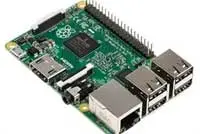 Looking to build on the success of the Raspberry PI and similar formats, the Ultibo project hopes to make the power of single board computers available in a way that is said to be easy to learn.
Looking to build on the success of the Raspberry PI and similar formats, the Ultibo project hopes to make the power of single board computers available in a way that is said to be easy to learn.
Ultibo says the approach is built around a model in which users can pick and choose what features they want to use in their projects. The installation is said to provide a modern and friendly integrated development environment, as well as a compiler and all necessary tools.
Ultibo says it has chosen to begin with the Raspberry Pi, but notes the approach has been designed to support a range of boards and to be flexible enough to grow and change with the market.
The Ultibo core is an embedded or bare metal development environment for Raspberry Pi. While it is not an operating system, it is said to provide many of the services as an OS, including memory management, networking and threading.
Based on a customised version of the Free Pascal compiler, Ultibo says it offers a ‘completely new’ option for makers to access the power and sophistication of single board computers without leaving behind the comfort and accessibility of the microcontroller model.
Author
Graham Pitcher
Source: www.newelectronics.co.uk
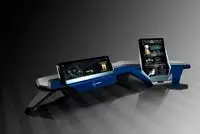 Software development services and IT solutions company, Luxoft Holding has unveiled AllView II, its second generation automotive cockpit technology. AllView II is designed to showcase the look-and-feel of Luxoft’s vision of the future for in-vehicle user interaction concepts and driving experiences in the emerging era of autonomous driving, the connected car, and the automotive Internet of Things (IoT).
Software development services and IT solutions company, Luxoft Holding has unveiled AllView II, its second generation automotive cockpit technology. AllView II is designed to showcase the look-and-feel of Luxoft’s vision of the future for in-vehicle user interaction concepts and driving experiences in the emerging era of autonomous driving, the connected car, and the automotive Internet of Things (IoT).
Based on Luxoft’s reference design platform and compliant with GENIVI Alliance requirements, AllView II encompasses a range of user experience (UX) and human machine interface (HMI) concepts such as multi-modal input with touch, gesture, eye-tracking and natural language voice systems as well as classic controllers. It also shows how the user interface changes when a vehicle enters autonomous driving mode, Car2x workload-adaptive HMI systems and seamless nomadic device integration for the connected car and IoT to meet a modern, social media-based lifestyle and dedicated automotive service offerings.
Vasily Suvorov, Luxoft’s vice president for technology strategy, said: “AllView II is designed to showcase our vision for how automotive cockpit environments need to evolve with the advent of new technologies and concepts. It also highlights the ways in which Luxoft’s development services can help achieve this.”
The AllView II cockpit-level HMI software system focuses specifically on the digital cluster, infotainment, driver monitoring, consumer-style driver inputs, and connected services, all contained within an integrated HMI software architecture and framework. Within the demonstration, UX and HMI focus on such concepts as natural language understanding and text-to-speech, gesture recognition and control and driver monitoring through eye tracking. In-vehicle infotainment focuses on social media access through an agile messaging co-pilot that provides the ability to safely react and respond while driving. It also delivers wireless device and cloud services integration, as well as improved navigation, telecommunication, and climate control capabilities.
“Our AllView II concept demonstrator highlights how automotive trends and technologies can be combined into a state-of-the-art, holistic vehicle cockpit concept that integrates multiple screens,” explained Georg Doll, Luxoft’s managing director of automotive. “This includes car head units and mobile devices, and also enables situation-aware human machine interaction where passengers help to reduce a driver’s workload.”
Author
Tom Austin-Morgan
Source: www.newelectronics.co.uk
